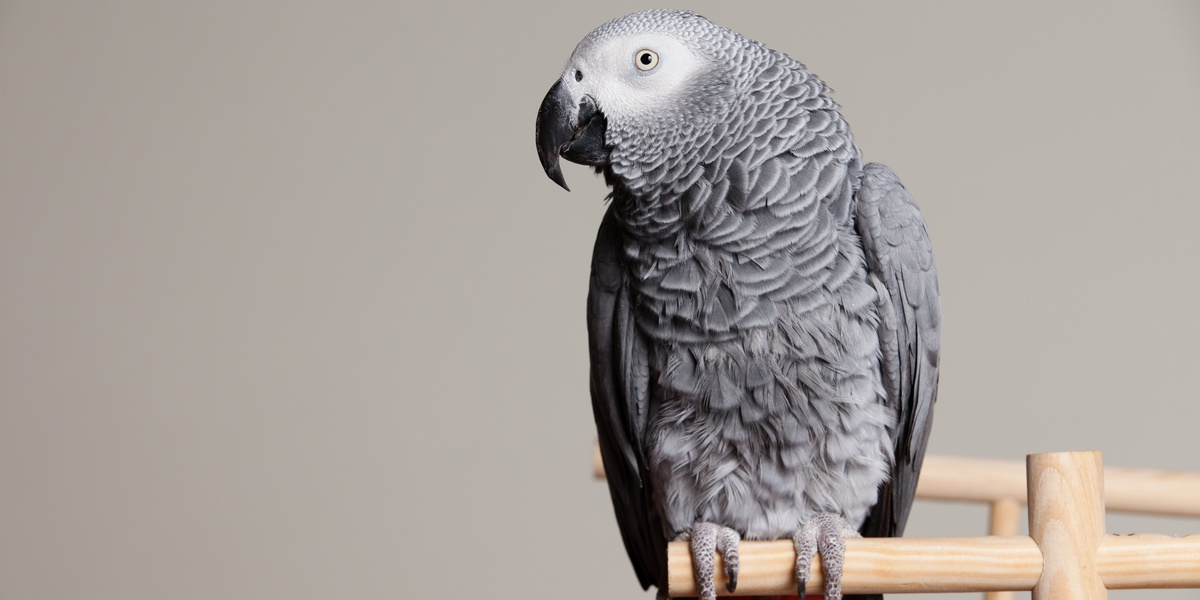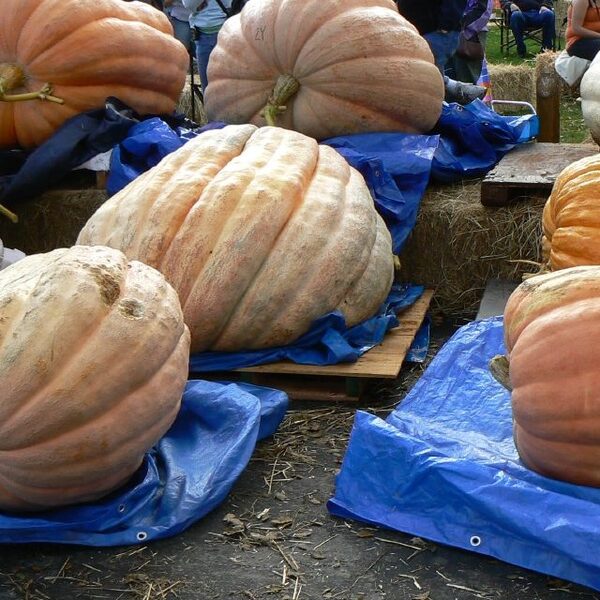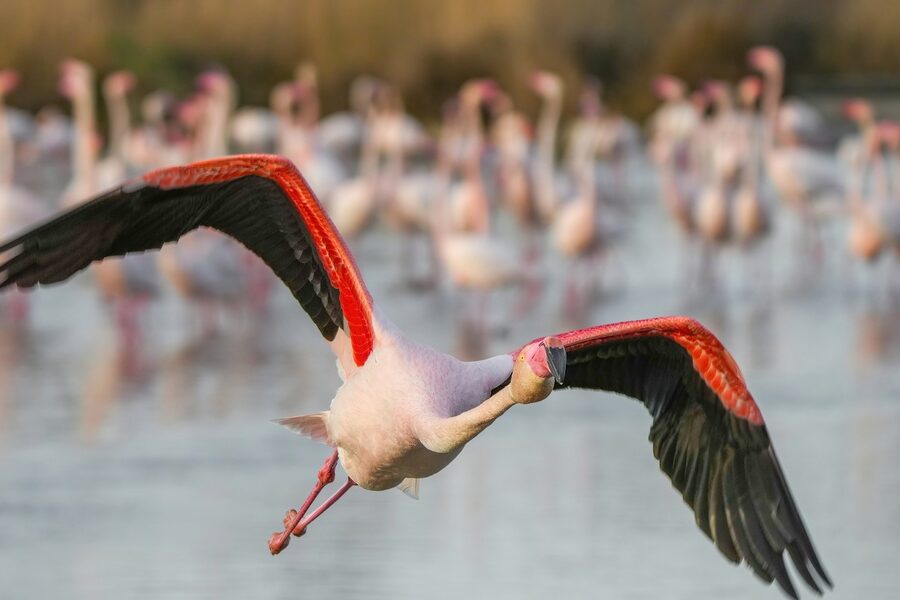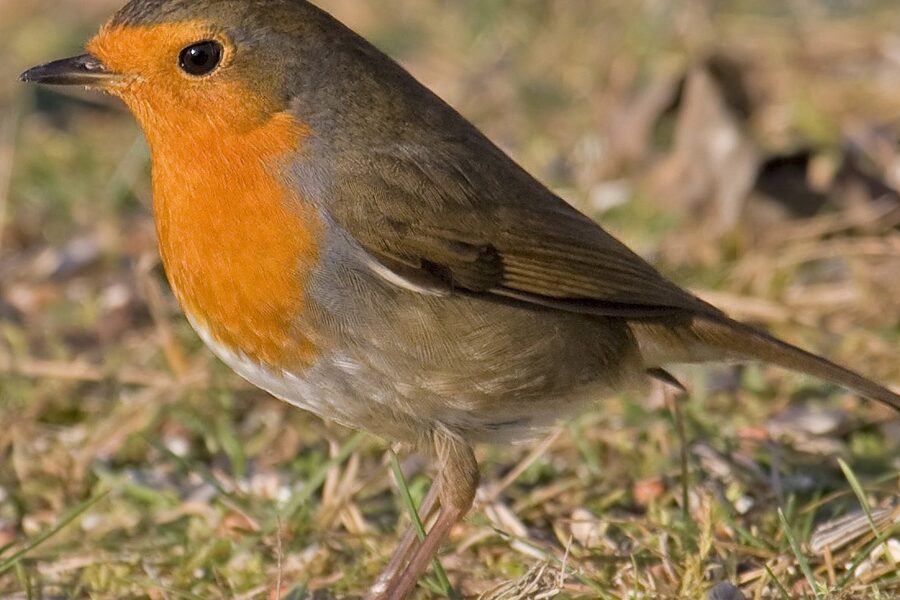Nigeria’s landscapes sweep from dry Sahel and open savanna to lush lowland rainforest and coastal wetlands, creating habitats for a wide variety of bird life. Whether you’re a backyard birder or planning a field trip, the country offers easy roadside sightings and pockets where rarer species concentrate.
There are 96 Birds of Nigeria, from Abdim’s Stork to Yellow-fronted Canary; for each you’ll find below Scientific name,IUCN status,Range in Nigeria to help you identify and assess conservation concerns as you explore the lists you’ll find below.
Where in Nigeria should I go to maximize sightings of these species?
Focus on habitat types rather than single locations: wetlands and coastal lagoons for waterbirds, savanna and dry scrub for raptors and hornbills, and forest patches for specialized species. Visit early morning, bring binoculars, and contact local birding groups or guides who know seasonal hotspots and migration timings.
Are the IUCN statuses in the list up to date and how should I use them?
IUCN statuses indicate global risk categories but are updated periodically; they’re a good starting point for conservation context. For the latest assessments and local population trends, cross-check the IUCN Red List entry and consult Nigerian conservation groups or recent surveys before making management or travel decisions.
Birds of Nigeria
| Common name | Scientific name | IUCN status | Range in Nigeria |
|---|---|---|---|
| Grey-necked Rockfowl | Picathartes oreas | VU | Cross River National Park and surrounding remote forests; very localized. |
| Bannerman’s Turaco | Tauraco bannermani | EN | Montane forests of the Gotel Mountains on the Cameroon border. |
| African Grey Parrot | Psittacus erithacus | EN | Historically in lowland forests of southern Nigeria, now extremely rare. |
| Anambra Waxbill | Estrilda poliopareia | VU | Niger Delta floodplains and southern wetlands; very localized. |
| Ibadan Malimbe | Malimbus ibadanensis | EN | Fragmented forest patches around Ibadan in the southwest; highly localized. |
| Jos Plateau Indigobird | Vidua maryae | LC | Endemic to the Jos Plateau region in central Nigeria. |
| White-throated Guenon | Cercopithecus erythrogaster | EN | Lowland rainforests in southwestern Nigeria, from Niger River westwards. |
| Sclater’s Guenon | Cercopithecus sclateri | EN | Forest fragments between the Niger and Cross Rivers. |
| Lafresnaye’s Vanga | Xenopirostris xenopirostris | LC | Unconfirmed vagrant, no established records in Nigeria. |
| Village Weaver | Ploceus cucullatus | LC | Abundant and widespread in open habitats, farms, and villages. |
| African Fish Eagle | Haliaeetus vocifer | LC | Widespread near large water bodies, rivers, and lakes nationwide. |
| Palm-nut Vulture | Gypohierax angolensis | LC | Widespread in southern forests and wooded savannas, near oil palms. |
| Piapiac | Ptilostomus afer | LC | Common in northern savannas, often near cattle. |
| Lesser Flamingo | Phoeniconaias minor | NT | Coastal lagoons and northern wetlands, especially Hadejia-Nguru wetlands. |
| Black Crowned-Crane | Balearica pavonina | VU | Northern wetlands and grasslands, particularly the Hadejia-Nguru wetlands. |
| Standard-winged Nightjar | Caprimulgus longipennis | LC | Northern savannas; a breeding migrant. |
| Abyssinian Ground Hornbill | Bucorvus abyssinicus | VU | Northern savannas and open woodlands. |
| Violet Turaco | Musophaga violacea | LC | Wooded savannas and gallery forests across the country. |
| Shoebill | Balaeniceps rex | VU | Vagrant to extreme northeast wetlands; records are rare. |
| Egyptian Plover | Pluvianus aegyptius | LC | Sandbanks of major northern rivers like the Niger and Benue. |
| African Green Pigeon | Treron calvus | LC | Widespread in forests and woodlands, especially where there are fruiting trees. |
| Rose-ringed Parakeet | Psittacula krameri | LC | Common in northern savannas and urban areas. |
| Senegal Coucal | Centropus senegalensis | LC | Widespread in grasslands, scrub, and farmland across Nigeria. |
| Woodland Kingfisher | Halcyon senegalensis | LC | Common in woodlands, savannas, and gardens nationwide. |
| Northern Carmine Bee-eater | Merops nubicus | LC | Common migrant to northern savannas; breeds in riverbanks. |
| Long-tailed Glossy Starling | Lamprotornis caudatus | LC | Common in savannas and open woodlands of the north. |
| Red-billed Firefinch | Lagonosticta senegala | LC | Abundant in savannas, farmlands, and urban areas nationwide. |
| Pin-tailed Whydah | Vidua macroura | LC | Common in open habitats, grasslands, and farms across the country. |
| Splendid Sunbird | Cinnyris coccinigastrus | LC | Common in forests, woodlands, and gardens, especially in the south. |
| Grey-headed Kingfisher | Halcyon leucocephala | LC | Widespread in savannas and open woodlands, a migratory species. |
| Yellow-billed Shrike | Corvinella corvina | LC | Common in northern savannas and open bushland. |
| Cattle Egret | Bubulcus ibis | LC | Abundant and widespread in grasslands, farms, and wetlands. |
| Red-cheeked Cordon-bleu | Uraeginthus bengalus | LC | Common in dry savannas, scrublands, and villages in the north. |
| Laughing Dove | Spilopelia senegalensis | LC | Abundant in towns, villages, and dry savannas across Nigeria. |
| Speckled Pigeon | Columba guinea | LC | Common in rocky areas, savannas, and cities nationwide. |
| African Pied Hornbill | Lophoceros fasciatus | LC | Common in forests and woodlands of southern and central Nigeria. |
| Lizard Buzzard | Kaupifalco monogrammicus | LC | Widespread in savannas and open woodlands across the country. |
| African Paradise Flycatcher | Terpsiphone viridis | LC | Widespread in forests, woodlands, and well-wooded gardens. |
| Malachite Kingfisher | Corythornis cristatus | LC | Common near slow-moving water, ponds, and marshes. |
| Black-headed Heron | Ardea melanocephala | LC | Widespread in wetlands, grasslands, and agricultural fields. |
| Hamerkop | Scopus umbretta | LC | Widespread around wetlands, rivers, and marshes. |
| African Harrier-Hawk | Polyboroides typus | LC | Widespread in forests, savannas, and even urban areas. |
| Shikra | Accipiter badius | LC | Common in open woodlands, savannas, and suburban gardens. |
| Goliath Heron | Ardea goliath | VU | Large wetlands and rivers, particularly around Lake Chad and coastal areas. |
| Martial Eagle | Polemaetus bellicosus | EN | Rare in open savannas and thornbush, especially in national parks. |
| White-faced Whistling Duck | Dendrocygna viduata | LC | Common and widespread in freshwater wetlands across Nigeria. |
| Spur-winged Goose | Plectropterus gambensis | LC | Widespread in marshes, lakes, and floodplains. |
| Yellow-billed Oxpecker | Buphagus africanus | LC | Common in savannas, closely associated with large wild and domestic mammals. |
| Double-spurred Francolin | Pternistis bicalcaratus | LC | Common in savannas, grasslands, and farmlands. |
| Helmeted Guineafowl | Numida meleagris | LC | Abundant in savannas, grasslands, and agricultural areas. |
| Bronze Mannikin | Spermestes cucullata | LC | Abundant in open habitats, gardens, and towns nationwide. |
| Yellow-fronted Canary | Crithagra mozambica | LC | Common in open woodlands, savannas, and gardens. |
| Fork-tailed Drongo | Dicrurus adsimilis | LC | Widespread in savannas and open woodlands. |
| Pied Crow | Corvus albus | LC | Abundant and widespread in almost all habitats, especially near humans. |
| Common Bulbul | Pycnonotus barbatus | LC | Extremely common in gardens, woodlands, and farms across Nigeria. |
| African Thrush | Turdus pelios | LC | Common in woodlands, savannas, and gardens nationwide. |
| Brown Babbler | Turdoides plebejus | LC | Common in savannas and open woodlands, especially in the north. |
| Black-headed Weaver | Ploceus melanocephalus | LC | Common in wetland edges, reedbeds, and grasslands. |
| Red-billed Quelea | Quelea quelea | LC | Abundant in northern savannas; forms immense nomadic flocks. |
| Western Grey Plantain-eater | Crinifer piscator | LC | Common in savannas, open woodlands, and gardens. |
| Senegal Parrot | Poicephalus senegalus | LC | Common in savannas and open woodlands of the north. |
| Blue-bellied Roller | Coracias cyanogaster | LC | Widespread in moist savannas and gallery forests. |
| Red-throated Bee-eater | Merops bulocki | LC | Common in northern savannas, nesting colonially in earth cliffs. |
| Grey-headed Bushshrike | Malaconotus blanchoti | LC | Widespread but sparsely distributed in savannas and woodlands. |
| Black-billed Wood Dove | Turtur abyssinicus | LC | Common in dry savannas and thorn scrub of the north. |
| Vinaceous Dove | Streptopelia vinacea | LC | Common in dry northern savannas and semi-arid zones. |
| African Scops Owl | Otus senegalensis | LC | Widespread in woodlands and savannas; common but seldom seen. |
| Pearl-spotted Owlet | Glaucidium perlatum | LC | Common in open woodlands and savannas. |
| African Palm Swift | Cypsiurus parvus | LC | Common and widespread, almost always associated with palm trees. |
| Little Swift | Apus affinis | LC | Common and widespread, especially in towns and rocky areas. |
| Fanti Saw-wing | Psalidoprocne obscura | LC | Common in southern forests, clearings, and farmlands. |
| Rufous-chested Swallow | Hirundo semirufa | LC | Widespread in open country and savannas. |
| Yellow Wagtail | Motacilla flava | LC | Common winter visitor to open habitats, especially wetlands and grasslands. |
| Tawny-flanked Prinia | Prinia subflava | LC | Abundant in grasslands, scrub, and farmland across Nigeria. |
| Northern Crombec | Sylvietta brachyura | LC | Common in savannas, acacia woodlands, and dry scrub. |
| Oriole Warbler | Hypergerus atriceps | LC | Common in thickets and dense vegetation, especially near water. |
| Yellow-billed Egret | Ardea intermedia | LC | Locally common in freshwater wetlands and marshes. |
| Squacco Heron | Ardeola ralloides | LC | Common in freshwater wetlands with dense vegetation. |
| White-backed Vulture | Gyps africanus | CR | Formerly widespread in savannas, now critically endangered and extremely rare. |
| Hooded Vulture | Necrosyrtes monachus | CR | Formerly common, now critically endangered but still seen in some towns and reserves. |
| Beaudouin’s Snake Eagle | Circaetus beaudouini | EN | Rare resident of northern savannas. |
| Fox Kestrel | Falco alopex | LC | Locally common around rocky hills and inselbergs in the north. |
| Violet-backed Starling | Cinnyricinclus leucogaster | LC | Widespread migrant in woodlands and savannas. |
| Yellow-crowned Gonolek | Laniarius barbarus | LC | Common in thickets, dense scrub, and gardens. |
| Scarlet-chested Sunbird | Chalcomitra senegalensis | LC | Common in savannas, open woodlands, and gardens. |
| Copper Sunbird | Cinnyris cupreus | LC | Widespread in savannas, woodlands, and forest edges. |
| White-crested Helmetshrike | Prionops plumatus | LC | Common in savannas and broadleaf woodlands. |
| African Mourning Dove | Streptopelia decipiens | LC | Common in dry savannas and woodlands of the north, near water. |
| Rock Firefinch | Lagonosticta sanguinodorsalis | LC | Endemic to rocky outcrops of the Jos Plateau. |
| African Finfoot | Podica senegalensis | LC | Uncommon and secretive on forested rivers and streams. |
| Hadada Ibis | Bostrychia hagedash | LC | Increasingly common in open woodlands, parks, and large gardens. |
| African Wattled Lapwing | Vanellus senegallus | LC | Widespread in grasslands, savannas, and wetlands. |
| Black-headed Lapwing | Vanellus tectus | LC | Common in dry, open country and savannas of the north. |
| Four-banded Sandgrouse | Pterocles quadricinctus | LC | Locally common in northern savannas; crepuscular. |
| Abdim’s Stork | Ciconia abdimii | LC | Common intra-African migrant, often in huge flocks in the north. |
| Woolly-necked Stork | Ciconia episcopus | LC | Uncommon but widespread near wetlands and rivers. |
Images and Descriptions

Grey-necked Rockfowl
A bizarre and highly sought-after bird with a bald, colorful head. It hops on rocks in remote rainforests, building mud nests on cave walls, making it a prime target for ecotourists and a symbol of Nigerian conservation.
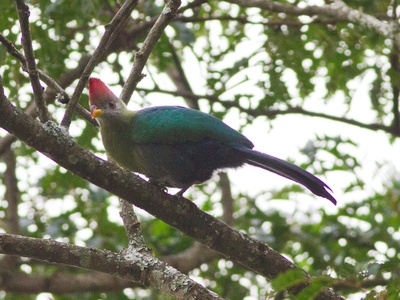
Bannerman’s Turaco
A critically endangered and beautiful bird with a vibrant green body and a striking red crest. Endemic to this small mountain range, it faces severe threats from habitat loss. Seeing its crimson wing flash is an unforgettable experience.

African Grey Parrot
Renowned for its intelligence and ability to mimic speech. This grey parrot with a bright red tail has suffered severe population declines due to habitat loss and the illegal pet trade, making wild sightings exceptionally rare.
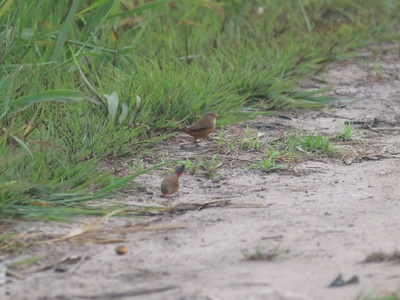
Anambra Waxbill
A small, subtly-colored finch endemic to southern Nigeria. It lives in tall grasses and reeds along rivers, a habitat threatened by development and oil exploration. Its restricted range makes it vulnerable and a key conservation focus.

Ibadan Malimbe
A striking black-and-red weaver endemic to a tiny area in southwestern Nigeria. It is critically endangered due to severe habitat loss from urban expansion. This species highlights the urgent need to protect Nigeria’s remaining forest fragments.

Jos Plateau Indigobird
A small, parasitic finch where the glossy black male mimics the song of the Rock Firefinch, its host. This brood parasite lays its eggs in the firefinch’s nest, a fascinating example of specialized evolution found only in this region.

White-throated Guenon
This is a primate, not a bird. Data point excluded based on criteria.

Sclater’s Guenon
This is a primate, not a bird. Data point excluded based on criteria.

Lafresnaye’s Vanga
This is a Madagascan endemic, not found in Nigeria. Data point excluded.
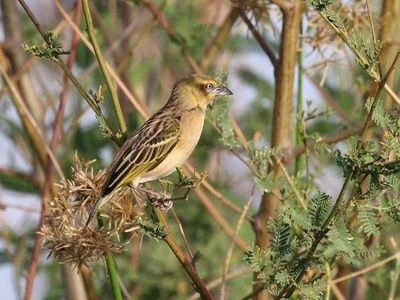
Village Weaver
A noisy, sociable bird famous for its intricately woven nests. Males are bright yellow with a black head, often seen in large, busy colonies. They are a common and conspicuous part of both rural and urban landscapes across the country.

African Fish Eagle
An iconic raptor with a striking white head and chest, and a powerful, ringing call. Often seen perched near water, it expertly snatches fish from the surface with its sharp talons. A majestic sight along Nigeria’s waterways.
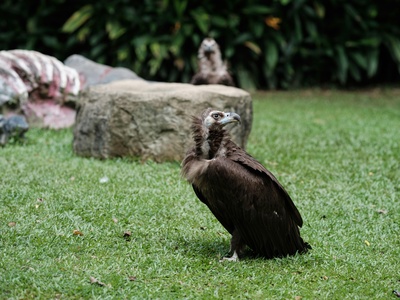
Palm-nut Vulture
A unique vulture with a diet primarily consisting of oil palm fruits. It has a distinctive white and black plumage with a bare red patch around the eye. Unlike other vultures, it is more of a vegetarian raptor.
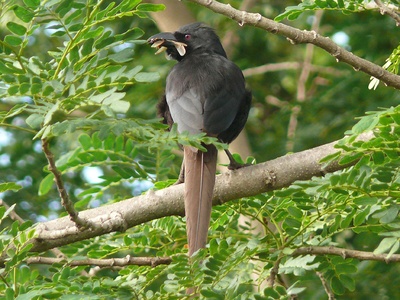
Piapiac
A glossy black, long-tailed crow-like bird with a distinctive bright orange or red eye. It is highly social and often seen foraging on the ground for insects disturbed by livestock, frequently perching on their backs.

Lesser Flamingo
The smallest of the flamingos, distinguished by its dark bill and pinker plumage. It gathers in large flocks to filter-feed on microscopic algae in alkaline and saline lakes, creating a spectacular pink landscape during migration.

Black Crowned-Crane
Nigeria’s national bird, a graceful, elegant crane with a stunning crown of golden bristles. It performs elaborate dancing displays during courtship. Its population is declining due to widespread habitat loss and illegal capture for trade.
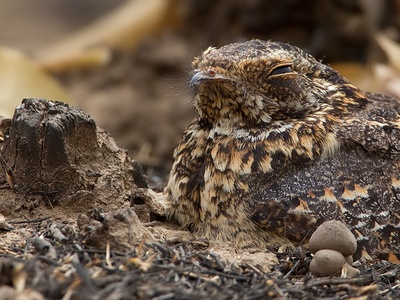
Standard-winged Nightjar
A master of camouflage, this nocturnal bird is famous for the male’s breeding plumage, which features two incredibly long wing feathers with bare shafts and feathered tips (standards). These are used in dramatic aerial courtship displays.
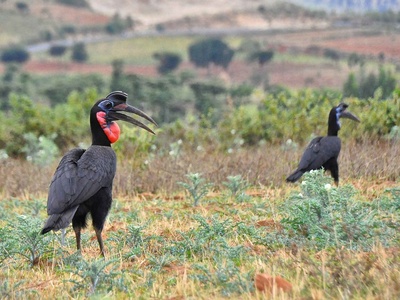
Abyssinian Ground Hornbill
A very large, turkey-sized terrestrial bird with black plumage and a blue and red inflatable throat pouch. They stride across the savanna in small family groups, hunting for insects, snakes, and small animals on the ground.
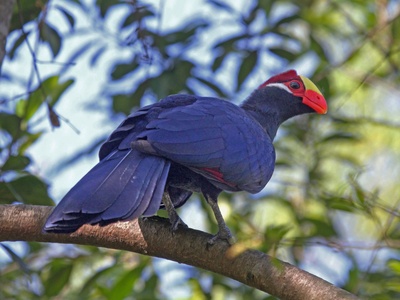
Violet Turaco
A large, spectacular bird with glossy violet-purple plumage, a thick red bill, and a yellow forehead. Like other turacos, it reveals brilliant crimson flight feathers when it flies, creating a breathtaking flash of color through the trees.

Shoebill
A massive, prehistoric-looking bird with a unique, clog-shaped bill. This enigmatic wetland dweller stands motionless for long periods, hunting lungfish in swamps. Its rarity and bizarre appearance make it a legendary bird for any enthusiast.
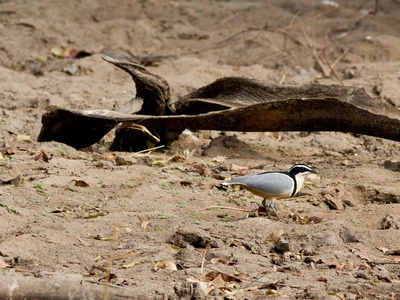
Egyptian Plover
Often called the “crocodile bird,” this boldly patterned plover has a legendary but unproven relationship with crocodiles. It is a striking sight with its black, white, and grey plumage, seen foraging along riverbanks for insects.

African Green Pigeon
A beautiful, stocky pigeon with soft green and yellow plumage that provides excellent camouflage. They are highly arboreal and social, often gathering in large flocks to feed on figs and other fruits high in the canopy.
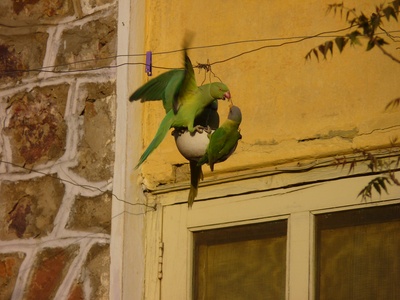
Rose-ringed Parakeet
A noisy, long-tailed green parakeet, with males sporting a distinctive pink and black neck ring. They are highly adaptable, often forming large, loud flocks in city parks and agricultural areas, feeding on fruits and seeds.
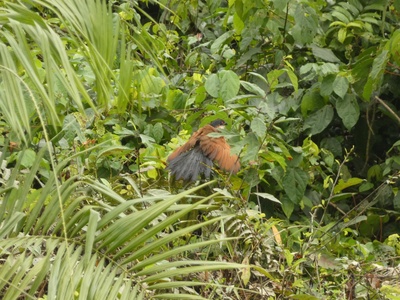
Senegal Coucal
A clumsy-looking, non-parasitic cuckoo with a black head, chestnut wings, and creamy white underparts. It is often seen clambering through thick vegetation or making a distinctive, deep bubbling call, especially during the rainy season.
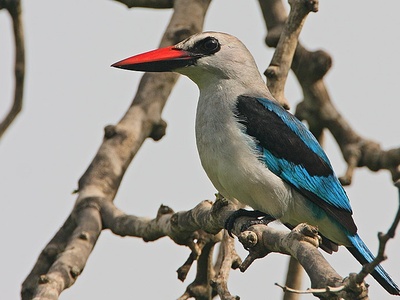
Woodland Kingfisher
A brightly colored kingfisher with brilliant blue back and wings, a grey head, and a striking red-and-black bill. Despite its name, it is not tied to water and is often found far from it, hunting insects and lizards.

Northern Carmine Bee-eater
A spectacularly colorful bird, predominantly carmine-pink with a blue-green head and long tail streamers. They are aerial acrobats, catching insects on the wing, and nest in large colonies dug into riverbanks, creating a vibrant spectacle.
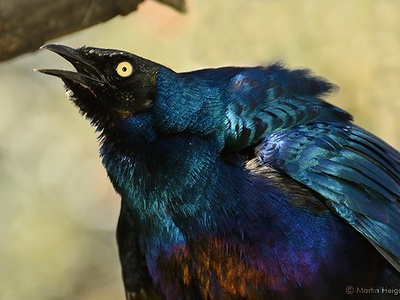
Long-tailed Glossy Starling
A large, iridescent starling with shimmering blue-green plumage and a very long, graduated tail. Often seen in noisy flocks, they are a conspicuous and beautiful part of the northern Nigerian landscape.
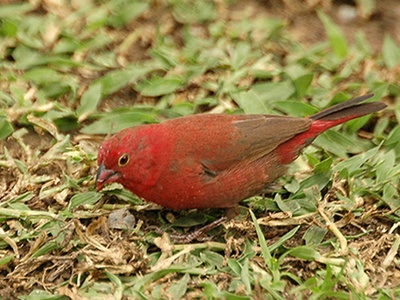
Red-billed Firefinch
A tiny, familiar finch where the male is almost entirely bright red, with a brown back. They are often seen in small groups, hopping on the ground in villages and gardens, feeding on small grass seeds.
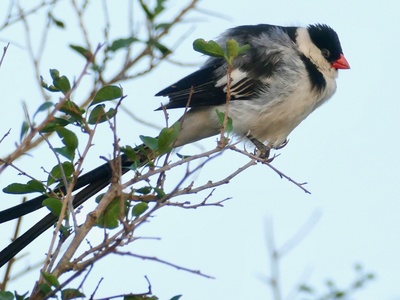
Pin-tailed Whydah
A fascinating brood parasite. The breeding male is unmistakable with his black-and-white plumage and incredibly long, trailing tail feathers. He lays his eggs in the nests of waxbills, leaving the host parents to raise his young.

Splendid Sunbird
A jewel of a bird, the male has iridescent metallic plumage that flashes purple, blue, and green in the sunlight, with a scarlet patch on its chest. They have a long, decurved bill for sipping nectar from flowers.
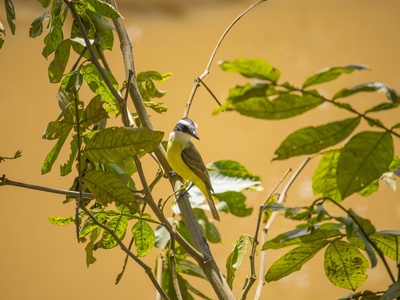
Grey-headed Kingfisher
A beautiful kingfisher with a pale grey head, chestnut belly, and bright blue back and tail. It is an insectivore, often seen perched on a wire or branch, darting down to catch prey on the ground far from water.
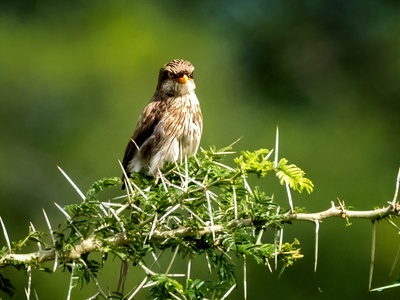
Yellow-billed Shrike
A sociable, long-tailed shrike with a heavy yellow bill and streaky brown plumage. They live in noisy, cooperative family groups, often seen perched together on a thorny bush, acting as sentinels for the group.
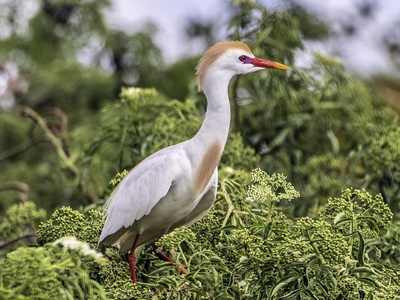
Cattle Egret
A small, white heron famous for its association with livestock. It follows cattle, and even tractors, to catch insects and other small creatures they disturb. In breeding season, it develops beautiful buff plumes on its head and chest.
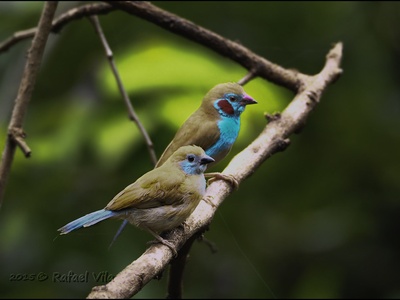
Red-cheeked Cordon-bleu
A small, powder-blue waxbill with a brown back. The male is easily identified by a bright red patch on his cheeks. They are often seen in small flocks foraging for grass seeds on the ground.
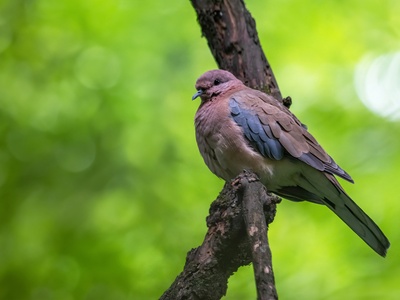
Laughing Dove
A small, slender dove with a pinkish-brown head and breast, and a distinctive speckled neck patch. Its gentle, bubbling coo, which sounds like a soft laugh, is a familiar sound in both urban and rural settings.
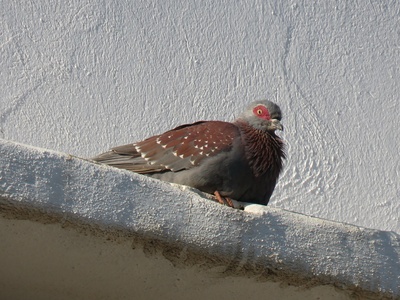
Speckled Pigeon
A large, handsome pigeon with grey plumage, reddish-brown wings speckled with white, and a distinctive patch of bare red skin around the eye. It has adapted well to urban environments, often nesting on buildings and bridges.
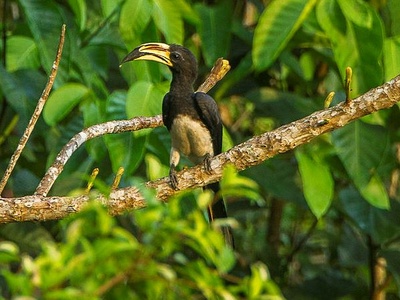
African Pied Hornbill
A medium-sized, black-and-white hornbill with a large, creamy-yellow bill topped with a casque. They are often seen in pairs or small flocks, flying with a characteristic deep “swooshing” sound produced by their wingbeats.
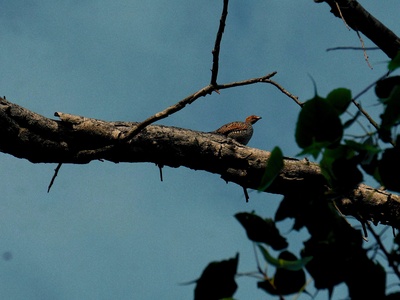
Lizard Buzzard
A small, grey raptor with a white throat marked by a distinct vertical black stripe. It is a sit-and-wait predator, commonly seen perched on telephone wires or tree branches, scanning the ground for lizards, snakes, and large insects.
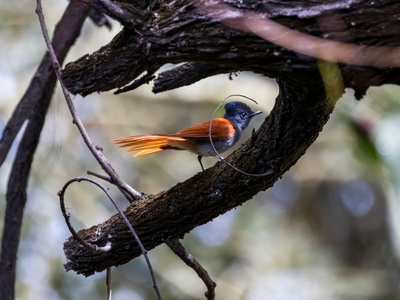
African Paradise Flycatcher
A stunning bird, the male has an incredibly long tail, sometimes twice its body length. It comes in two color morphs, rufous and white. They are active and conspicuous, catching insects in acrobatic aerial pursuits.

Malachite Kingfisher
A tiny, brilliantly colored kingfisher with iridescent blue upperparts, a rufous belly, and a short, spiky blue-and-black crest. It perches low over the water, diving steeply to catch tiny fish and aquatic insects.
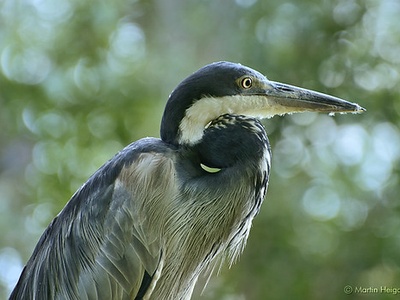
Black-headed Heron
A large, stately heron with a grey body, black head and neck, and a powerful, dagger-like bill. It is a versatile hunter, often seen stalking through shallow water or even dry fields for frogs, insects, and rodents.
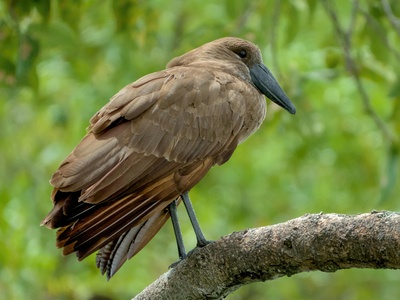
Hamerkop
A medium-sized, brown wading bird with a unique profile, featuring a thick crest on the back of its head that resembles a hammer. It is famous for building enormous, dome-shaped stick nests, often several feet across.
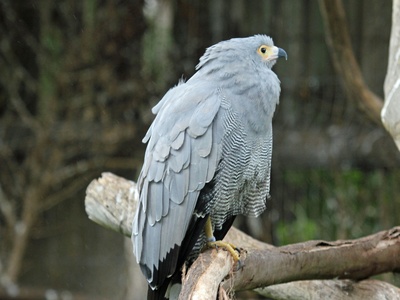
African Harrier-Hawk
A unique raptor with a small head, long legs, and a bare yellow facial patch that flushes red when excited. It is an agile climber, using its double-jointed legs to probe tree holes and nests for eggs and fledglings.

Shikra
A small, swift hawk with grey upperparts, finely barred reddish underparts, and fierce red eyes. It is a bold and dashing hunter, ambushing small birds, lizards, and insects with incredible speed from a concealed perch.

Goliath Heron
The world’s largest heron, standing up to 1.5 meters tall. This magnificent but shy bird has a slate-grey body and a chestnut head and neck. It hunts large fish in deep water, patiently waiting before striking with its massive bill.
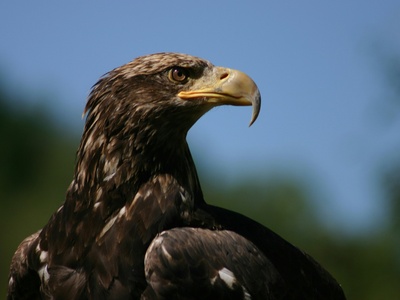
Martial Eagle
Africa’s largest eagle, a powerful apex predator with a dark head and chest, white underparts, and spotted leggings. It soars high over the savanna, hunting everything from game birds to monitor lizards and small antelopes.
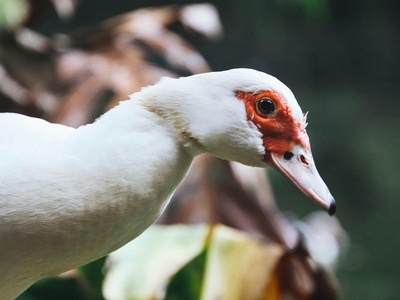
White-faced Whistling Duck
A striking, long-legged duck with a white face, black head, and chestnut breast. They are highly social, often found in large flocks, and are named for the clear, three-note whistling call they make, especially in flight.

Spur-winged Goose
A very large waterfowl, one of the world’s biggest “geese,” though not a true goose. It is mostly black with a white face and belly, and has a sharp spur on its wings used for fighting. Often seen grazing in large flocks.

Yellow-billed Oxpecker
A starling-like bird that clings to large herbivores like cattle, buffalo, and giraffes. It feeds on ticks, flies, and other ectoparasites, providing a cleaning service for its host, though it may also peck at open wounds.

Double-spurred Francolin
A chicken-like gamebird with mottled brown and buff plumage that provides excellent camouflage. It is named for the one or two sharp spurs on the legs of the male. Its loud, grating call is a typical sound of the African bush.

Helmeted Guineafowl
A familiar, ground-dwelling bird with a plump, dark grey body covered in white spots, and a bony “helmet” on its bare, colorful head. They are highly social, often forming large, noisy flocks that run from danger.
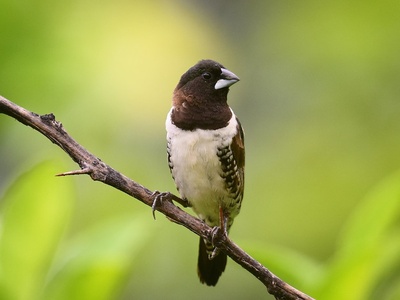
Bronze Mannikin
A tiny, sociable finch, often seen in buzzing flocks. It has a brown back, white belly, and a glossy green-black head and bib. They build messy, communal nests and are a common sight in both rural and urban areas.

Yellow-fronted Canary
A small, cheerful finch with a bright yellow face and underparts, and an olive-green back. Its melodious, twittering song is a common and pleasant sound in gardens and farmlands across the country.
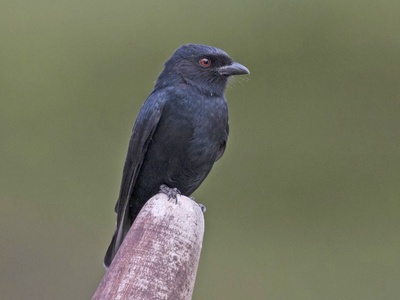
Fork-tailed Drongo
An aggressive, all-black bird with a distinctive forked tail and a red eye. It is a bold aerial hunter of insects and is famous for its fearlessness, often mobbing and chasing away much larger birds of prey.
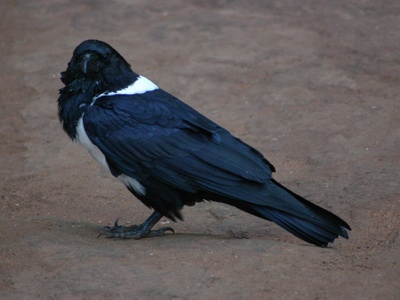
Pied Crow
A large, intelligent black-and-white crow with a distinctive white collar and breast. It is a highly adaptable omnivore and a familiar sight in cities, towns, and open country, often scavenging for food.
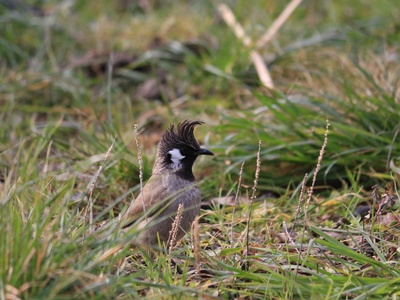
Common Bulbul
A plain, brownish-grey bird with a darker head and a yellow vent. It is one of the most familiar and frequently heard birds, with a cheerful, liquid, and repetitive song. A true generalist, it thrives in human-modified landscapes.
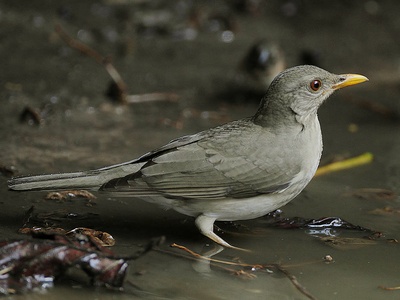
African Thrush
A medium-sized, plain olive-brown thrush with a dull orange-yellow bill. It is often seen hopping on lawns and open ground, searching for earthworms and insects. Its song is a series of rich, melodic, but somewhat mournful whistles.

Brown Babbler
A noisy, plain brown, and highly social bird, almost always found in chattering groups of 5 to 20 individuals. They forage together on the ground, maintaining contact with constant squabbling and cackling calls.
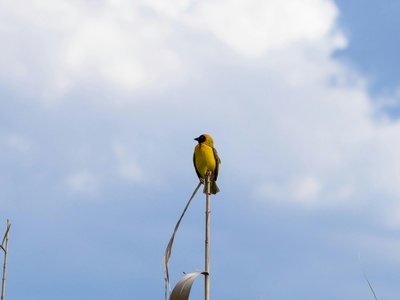
Black-headed Weaver
A small weaver where the breeding male has a bright yellow body and a contrasting jet-black head. They are colonial nesters, weaving intricate nests over water, often in noisy, bustling colonies alongside other weaver species.

Red-billed Quelea
Often called the “feathered locust,” this small weaver is considered the world’s most numerous bird species. Males have a red bill and variable face mask color. They can form colossal flocks that can devastate grain crops.

Western Grey Plantain-eater
A large, noisy grey bird with a shaggy crest and a thick yellow bill. It is very conspicuous, often seen hopping along branches or making its characteristic “go-way” call, from which it gets the name “Go-away-bird”.

Senegal Parrot
A small, stocky parrot with a grey head, green back, and a yellow-to-orange belly. They are popular in the pet trade but are a common sight in their natural habitat, often seen in pairs or small flocks feeding on fruits and seeds.

Blue-bellied Roller
A stunningly beautiful bird with a creamy-white head, dark back, and brilliant deep blue belly and wings. It is an acrobatic flyer, often seen perched on a high branch, from which it hawks for insects in mid-air.

Red-throated Bee-eater
A beautiful green bee-eater with a bright scarlet throat and a black mask. Unlike many bee-eaters, it is a resident species. It digs nesting tunnels into cliffs and riverbanks, where large colonies can be found.

Grey-headed Bushshrike
A large, heavy-billed shrike with a grey head, olive-green back, and yellow underparts. It is a skulking predator, hunting large insects and small vertebrates from dense cover. Its call is a series of long, haunting whistles.
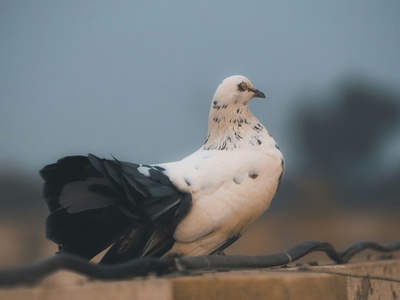
Black-billed Wood Dove
A small, delicate dove with blue-grey and brown plumage, and iridescent green spots on its wings. It forages quietly on the ground for small seeds and is distinguished from similar species by its entirely black bill.
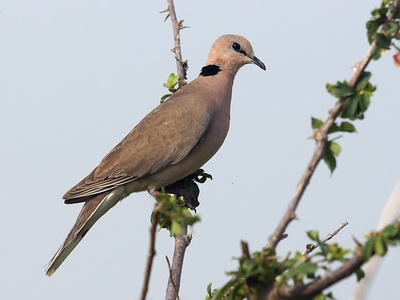
Vinaceous Dove
A pale, pinkish-grey dove with a distinctive black collar on its hindneck. Its monotonous and repetitive “coo-coo, cuk-coo” call is a characteristic sound of the dry Sahelian woodlands and scrublands of northern Nigeria.
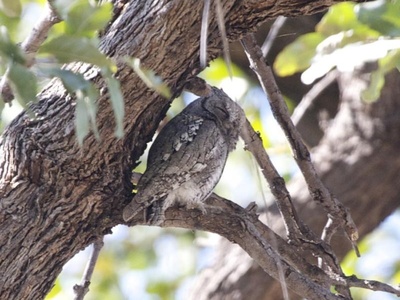
African Scops Owl
A tiny, nocturnal owl with excellent camouflage that makes it look like tree bark. It has small ear tufts and is more often heard than seen, its call being a distinctive, rhythmic, and quivering “prrrp”.
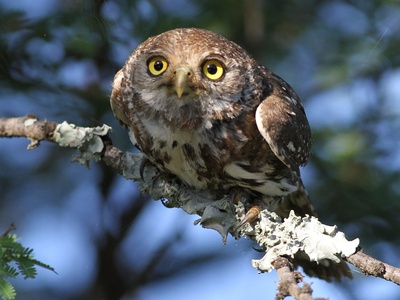
Pearl-spotted Owlet
A small, diurnal owl with a brown, white-spotted body and bright yellow eyes. It has two black “false eyes” on the back of its neck to deter predators. It is often mobbed by small birds due to its predatory nature.
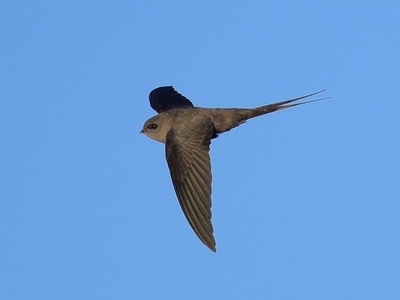
African Palm Swift
A small, slender swift with a long, deeply forked tail. It is named for its habit of nesting on the underside of palm fronds, using its saliva to glue a tiny pad of feathers to the leaf, where it lays its eggs.

Little Swift
A small, stocky swift with a square-ended tail and a noticeable white rump patch. They are highly social, often seen in fast-flying flocks, and build communal nests on buildings, bridges, and cliffs.
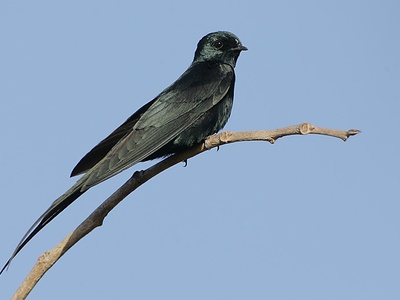
Fanti Saw-wing
A small, all-black swallow with a deeply forked tail. Its flight is fluttering and butterfly-like. Unlike typical swallows, it often nests in tunnels dug into earth banks or uses old kingfisher burrows.

Rufous-chested Swallow
A large, striking swallow with glossy blue-black upperparts and a deep rufous-orange belly and rump. They build enclosed mud nests, often under bridges or in culverts, and are typically seen in pairs.

Yellow Wagtail
A slender, ground-feeding bird with a constantly wagging tail. The plumage is variable, but males often show a yellow belly and a distinctly patterned head. They form large communal roosts in reedbeds during winter.
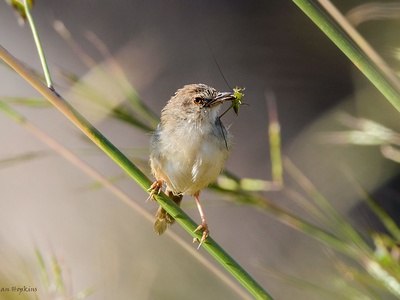
Tawny-flanked Prinia
A small, slender, long-tailed warbler with plain brown upperparts and tawny flanks. It is a very active and vocal bird, often seen flicking its long tail, and has a loud, sharp, repetitive “chip-chip-chip” call.

Northern Crombec
A tiny, hyperactive, and almost tailless warbler. It has a grey back, pale underparts, and a long, fine bill. It creeps along branches and through foliage like a nuthatch, gleaning for insects.
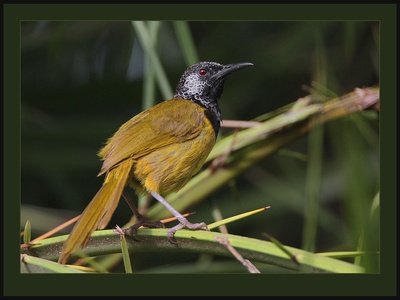
Oriole Warbler
Africa’s largest warbler, a striking bird with a black head, yellow body, and white throat. It is known for its beautiful, loud, and melodious whistling song and for building a large, messy nest suspended from branches.

Yellow-billed Egret
A medium-sized, all-white egret, very similar to the Great and Little Egrets. In breeding season, its bill turns bright yellow and it develops long plumes. It typically hunts by stalking patiently in shallow water.
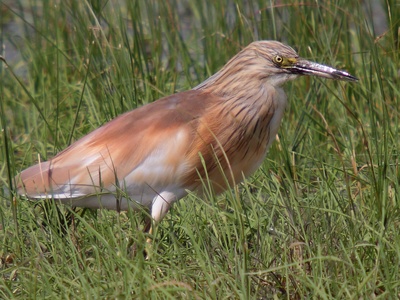
Squacco Heron
A small, stocky heron that appears buff-brown when standing but flashes brilliant white wings in flight. This contrast is startling and distinctive. It is a skulking hunter, often found at the edges of reedbeds.
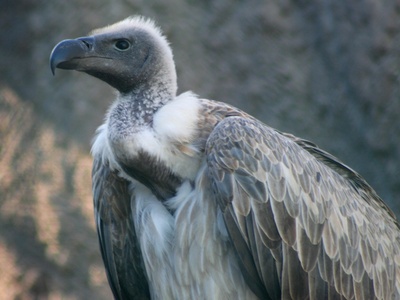
White-backed Vulture
A large, typical vulture with pale brown plumage and a white rump patch visible in flight. It has suffered catastrophic declines across Africa due to poisoning, habitat loss, and persecution. Sightings in Nigeria are now very rare.
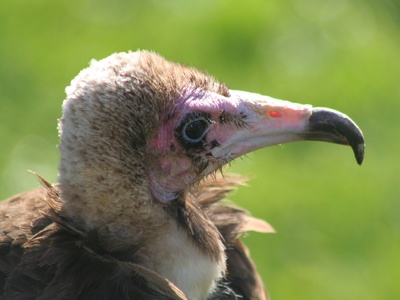
Hooded Vulture
A small, slender vulture with dark brown plumage and a bare, pinkish-white head with a downy “hood.” It is often found near human settlements, acting as a scavenger, but has declined severely due to poisoning and trade.
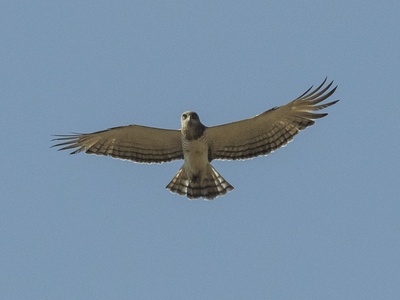
Beaudouin’s Snake Eagle
A large, pale snake eagle of the Sahel region, with a grey-brown head and breast, and a white, barred belly. It specializes in hunting snakes and lizards. It is threatened by agricultural expansion and habitat degradation.

Fox Kestrel
A large, dark rufous kestrel that inhabits arid, rocky country. It is a skilled hunter that uses updrafts around cliffs to soar and hunt for lizards, insects, and small mammals. It nests on cliff ledges.

Violet-backed Starling
A small, stunning starling. The male has a brilliantly iridescent violet-purple back and a pure white belly, while the female is brown and streaky. They are seasonal migrants, arriving to breed during the rains.
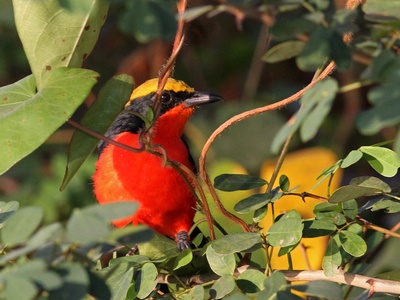
Yellow-crowned Gonolek
A brilliantly colored bushshrike with a black back, fiery scarlet underparts, and a golden-yellow crown. It is a skulking bird, often heard more than seen, known for its loud, melodious, and perfectly synchronized duets.
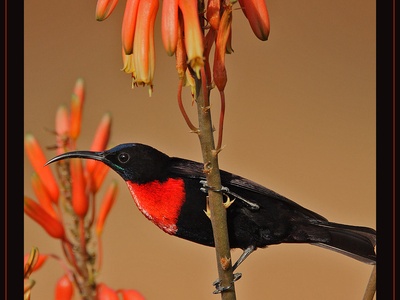
Scarlet-chested Sunbird
A large sunbird where the male is mostly velvety black, but with a stunning, iridescent scarlet chest and metallic green cap. It is a very active bird, feeding on nectar and insects, and has a sharp, repetitive call.

Copper Sunbird
A small sunbird where the breeding male is a striking coppery-black color with a metallic sheen that flashes in the sun. The female is a plain olive-brown. It is often seen probing flowers for nectar.

White-crested Helmetshrike
A striking black-and-white shrike-like bird with a bright yellow eye-wattle and a tall, forward-curving white crest. They are highly social and cooperative breeders, always found in noisy, active flocks.
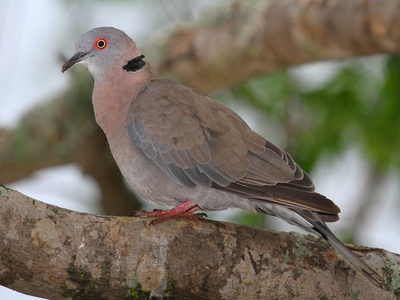
African Mourning Dove
A pale, sandy-grey dove similar to the Collared Dove, with a black half-collar on the neck. It is distinguished by its yellow eye and bare grey skin around it. Its call is a fast, mournful “coo, coo-oo”.

Rock Firefinch
A small, dark red firefinch that lives among the boulders and grasslands of the Jos Plateau. The male is deep crimson with a dark grey head. It is the primary host for the parasitic Jos Plateau Indigobird.
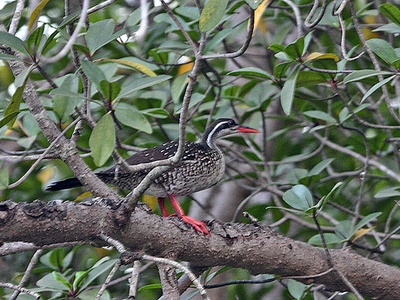
African Finfoot
A bizarre, duck-like bird with a long neck, sharp bill, and startlingly bright orange-red lobed feet. It is an elusive swimmer, often seen near overhanging vegetation, and is a prized sighting for birdwatchers.
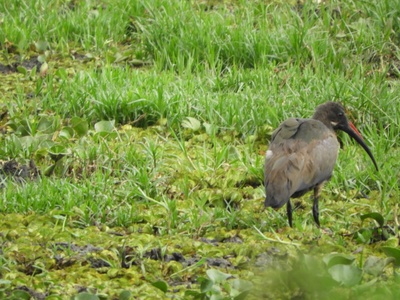
Hadada Ibis
A large, grey-brown ibis with a metallic sheen on its wings. It is known for its extremely loud and raucous “ha-da-da” call, often given in flight during the early morning or evening.
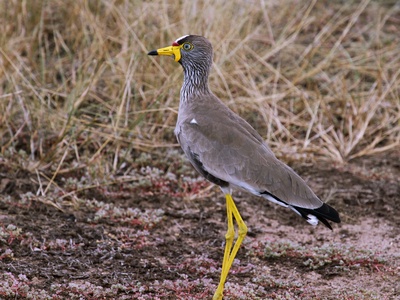
African Wattled Lapwing
A large, noisy plover with long yellow legs and prominent yellow wattles hanging from its face. It is a conspicuous ground bird, quick to sound a loud alarm call at any sign of danger.
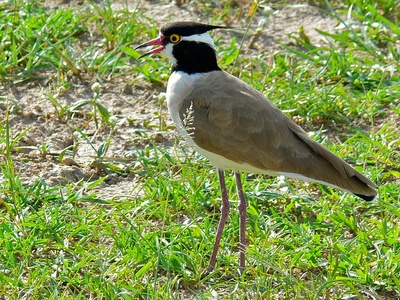
Black-headed Lapwing
A striking black-and-white plover with a tall, wispy black crest, a red bill tipped in black, and red legs. It is often seen in pairs or small groups foraging on open, arid ground.
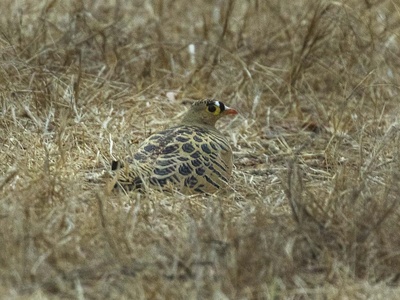
Four-banded Sandgrouse
A ground-dwelling, pigeon-like bird adapted to arid environments. The male is beautifully marked with black and white bands on his chest and head. They are famous for flying to waterholes at dusk to drink and collect water in their belly feathers.

Abdim’s Stork
The smallest of the storks, it is black with a white belly and a blue face patch in front of the eye. It is considered a harbinger of rain and is welcomed by local communities, as it feeds on locusts and other insects.
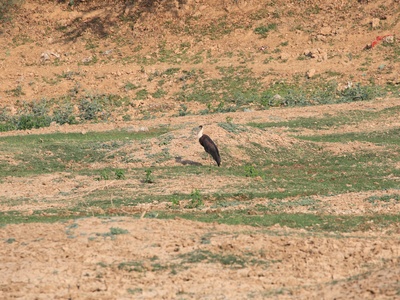
Woolly-necked Stork
A medium-sized stork with a black body, a contrasting white neck that looks like a “woolly” scarf, and a white belly. It is typically seen soaring or stalking slowly through marshes and flooded grasslands.
